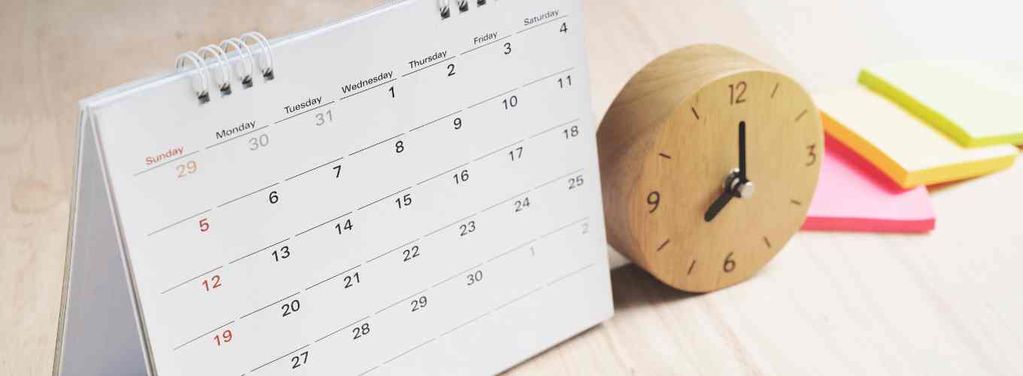Why break the routine? And how?

Routine in the workplace, while providing a sense of stability and security, can quickly become a barrier to employee fulfillment and overall organizational performance.
Days that feel too similar or repetitive tasks can have a negative impact on motivation, creativity, and mental health. In the medium term, employee engagement may even be adversely affected. This is bad news for productivity and innovation. In the long run, it could lead to higher turnover rates as employees seek more stimulating environments that better align with their mindset.
What leads to routine?
Before wanting to change everything, it’s crucial to understand the mechanisms that lead to routine. Identifying them is the best way to combat them.
- Repetition
Much like Charlie Chaplin in Modern Times, the primary cause of routine is feeling like one is constantly doing the same thing. Repeated tasks or actions without any novelty or prospects for evolution can quickly lead to boredom. We’ve all heard a colleague express the feeling of “going around in circles” or “not making progress” or “always doing the same thing.”
- Lack of communication
An environment with limited exchanges, whether between colleagues or with management, tends to reinforce feelings of isolation and stagnation. The absence of constructive feedback or collaborative moments diminishes the desire to innovate and keeps teams in a rigid routine. It cannot be emphasized enough that a continuous link must be established between teams and their managers.
- Lack of challenges and growth opportunities
The absence of stimulating goals or new opportunities for professional advancement is a significant cause of demotivation. When an employee feels they are not progressing in their career or are stuck in a position, routine intensifies and engagement decreases.
- Monotonous work environment
In some companies, when trust between management and an employee is broken, it’s not uncommon to move them to a less pleasant workspace. This is anything but trivial. The environment we work in plays a very significant role in our morale. Poorly designed, impersonal, or rigid offices can exacerbate daily monotony. Conversely, a flexible and dynamic environment contributes to energizing and enhancing collaborator creativity.
- Too much rigidity
It has been noted repeatedly that more and more employees are asking for workplace flexibility from their employers regarding schedules, pay packages, and work-life balance. Overly strict working methods can stifle employees’ initiative and autonomy. When everything is rigidly planned, it becomes difficult for teams to think outside the box and propose new solutions. Consequently, the risk of routine is real.
- Inappropriate work pace
A pace that is either too predictable or excessively intense also contributes to the establishment of routine.
On the way to something else…
While not everything can be changed with a magic wand, it is possible to implement certain actions quickly that can profoundly change employees’ daily experiences without requiring a complete overhaul.
One initial approach is to reassess the overall layout of the workspace. Airy areas, relaxation or leisure spaces, a proper cafeteria, or even a gym can have a direct positive impact on employee well-being. A change in decor may also help break the routine. Bright colors, plants, comfortable and functional furniture—all these changes can make a big difference! Ideally, these changes should be made after consulting employees to understand their preferences.
At the same time, new and simple initiatives such as offering training sessions or workshops to learn new skills, promoting internal mobility (temporary job or team changes), or inviting external speakers or experts to inspire employees can be effective.
What if we played?
Another way to break the routine is to… play! This disruptive approach brings a new perspective to one’s relationship with work and the time devoted to it. This can be done during creative breaks: escape rooms, board games, or building games like LEGO®. This approach has numerous benefits. It strengthens team cohesion, boosts creativity, reduces stress, enhances well-being, increases employee engagement, and improves hierarchical relationships.
In the same vein, themed days (costume parties, cooking contests, meditation sessions, sports outings) or disruptive days (hackathons, pet days) can be organized. And, of course, team-building activities.
Changing work methods
Playing or altering physical spaces is a first step. However, it might also be necessary to reassess the company’s structuring and operations more profoundly. Traditional work methods, often rigid and linear, greatly contribute to workplace routine. To energize teams and break monotony, it could be beneficial to introduce new approaches. For example, experimenting with collaborative methods, such as agile methodology (adapt as you go) or design thinking (a collaborator-centered approach aimed at creatively and innovatively solving problems). These approaches encourage exchanges, better adaptation to unexpected challenges, and stimulate creativity.
Another approach previously discussed in OpenSpace is remote work (or flexible hours) which can break daily monotony. It provides employees with autonomy, allowing them to organize their schedules according to their natural rhythm and personal constraints. This flexibility promotes a better work-life balance while increasing job satisfaction.
To break routine, it is also possible to rethink how meetings are organized. We all know that far too many meetings are still too long and unproductive. Instead of the traditional one-hour format, “stand-up meetings” of 10 to 15 minutes can be proposed to cut to the chase and engage all participants.
The integration of innovative digital tools is another key avenue. Automating repetitive tasks, like email processing or data management, frees up time for higher-value tasks. These tools, often intuitive, simplify daily responsibilities and enhance efficiency. Many effective tools exist today, such as the generalist ChatGPT-4 or specialized tools like Hiretual (recruiting), Xero (finance), MonkeyLearn (data analysis)…
All this time saved allows one to step away from the repetitive framework a bit.
The morning routine
Unlike the negative routine that leads to boredom, some well-chosen regular habits can actually enhance productivity, well-being, and motivation. An effective “morning routine” sets the tone for the day by establishing a rhythm and boosting energy for tackling professional challenges. Specifically, this could involve waking up at the same time every day to partake in a ritual (meditation, breathing exercises…). Next, moving to awaken the body (stretching…), followed by a balanced breakfast to recharge. And why not engage in some sport or take ten minutes to reflect on the day’s priorities? 😊
Source : https://www.thetimes.com/life-style/health-fitness/article/early-wake-up-alarm-risers-benefits-0j35pjj0b?utm_source=chatgpt.com®ion=global
Companies that have successfully broken the routine
It’s undoubtedly easier to say that we will change the routine than to actually implement changes. Some companies have managed to do this, often with little financial investment. For example, Atlassian, an Australian tech company, organizes quarterly days where employees can work on any project of their choice for 24 hours. Innovative ideas emerge from these free sessions. How does it break the routine? It gives employees space to explore their passions and propose creative solutions.
Similarly, Zappos, an American digital company focused on shoe retail, regularly organizes games, parties, and themed days for its employees. This creates a relaxed work atmosphere that fosters engagement. How does it break the routine? Days don’t feel the same, thanks to an environment that encourages friendliness and fun.
Checklist
Here’s our list of daily little pleasures to transform the workday. Try them out this year!
- Telecommute with a friend and enjoy a nice lunch together.
- Take active breaks. A walk in the park at lunchtime is great for gaining perspective on your projects.
- Organize a lunch break around board games for a fun moment with colleagues.
- Enroll in a new training session to enhance your skills.
- Create an inspiring and motivating playlist to energize your day.
- Practice gratitude by taking a moment each day to acknowledge your successes and those of your colleagues.
- Set up brainstorming sessions with colleagues to generate new ideas without pressure.
The Figure: 16
We spend 16% of our professional lives in useless meetings.
Source: https://www.inc.com/geoffrey-james/you-simply-wont-believe-how-much-time-you-waste-in-meetings-at-work-according-to-mit.html
Did you know ?
- News7 November, 2025How much can you save with meal vouchers?

- News31 October, 2025Everything you need to know about Edenred Gift in Luxembourg

